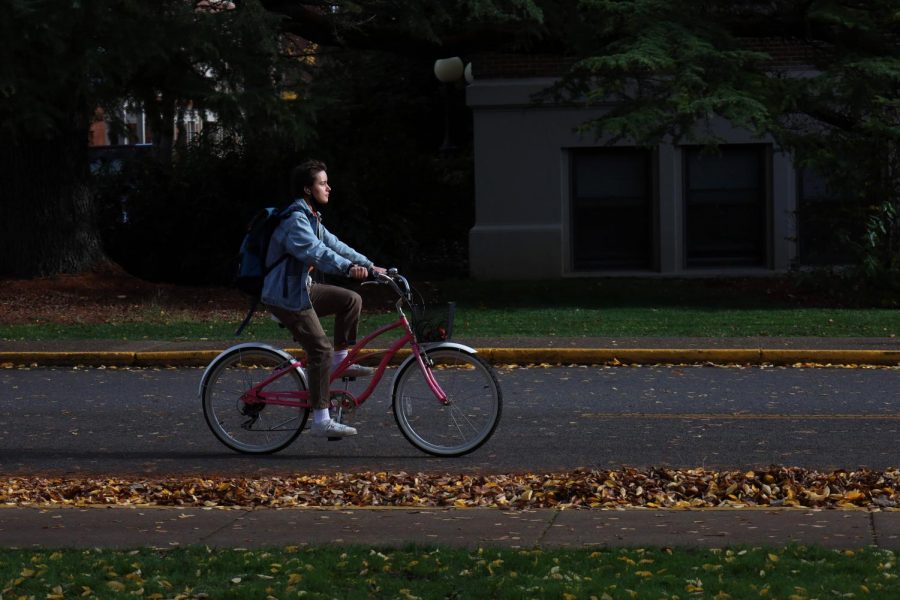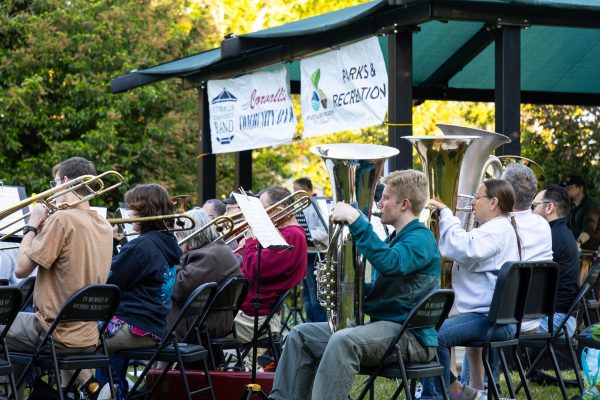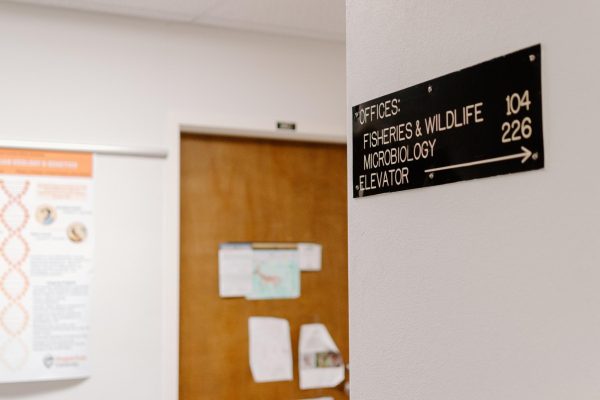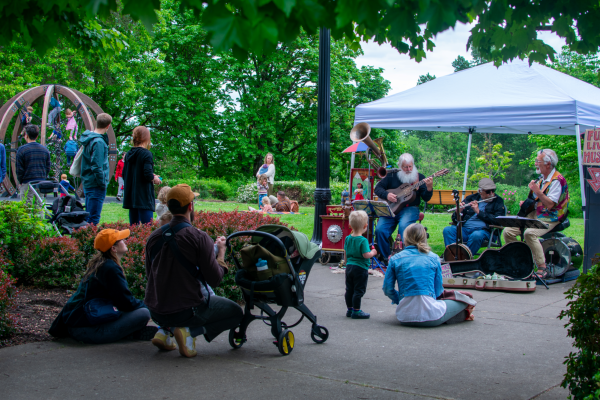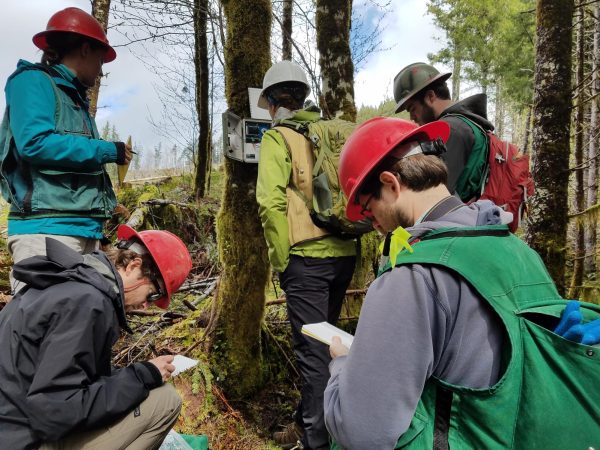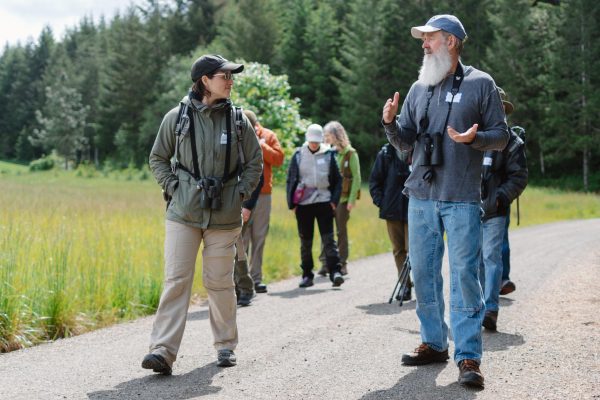Corvallis leaders, community representatives discuss progress toward Imagine Corvallis 2040
November 29, 2021
The Imagine Corvallis 2040 vision is “off to a good start” according to Mayor Biff Traber, despite obstacles like the COVID-19 pandemic.
The Imagine Corvallis 2040 vision was announced in 2016 by the City of Corvallis in collaboration with other community organizations as a collection of guiding principles for future decision-making in Corvallis’ community development.
The City of Corvallis Strategic Operational Plan for the vision revolves around six focus areas established by the Imagine Corvallis Action Network—a board made up of city and community representatives—including “Engage and Support,” “Steward and Sustain,” “Learn and Thrive,” “Innovate and Prosper,” “Create and Celebrate” and “Plan and Change.”
“[Imagine Corvallis 2040 is] a description of what the community would like to see itself as in 2040,” Traber said. “This vision is intended to help guide various groups in town as they develop their own plans over the next 20 years.”
Traber highlighted several ways in which the city and community have collaborated to fulfill the vision since it was established.
The Community Involvement and Diversity Board has granted money for neighborhood projects and events, including a mural painting. Also, the city and county have pioneered a “more responsive” joint emergency operation center and the city has collaborated with OSU on sustainability initiatives.
Furthermore, Traber said the Corvallis Sustainability Coalition Food Action Team has worked on the It’s On Us Corvallis project, using community funds and donations to purchase food from local restaurants and distribute it to community members in need during the pandemic.
“[The IOU project is] one of those [collaborations] where the community as a whole has come together to support a part of the community—two different parts of the community: the restaurants who needed to survive and the people who needed food to survive—and so, putting both of those together, you begin to have a synergy, and it’s part of the community as a whole coming together to make this work,” Traber said.
Ward 4 City Councilor Gabe Shepherd explained the relationship and collaboration between the city and OSU in working toward the 2040 vision.
“I think there are a lot of good ways where OSU is partnering with the city on bikeability, green infrastructure, those kinds of things,” Shepherd said. “[However,] there are neighborhoods nearby [campus] who want OSU to listen to their concerns more around parking and housing.”
Traber said ICAN’s Strategic Operating Plan includes various mechanisms to combat Corvallis’ housing shortage as the city grows.
The city has worked on rezoning land for denser, mixed-use residential buildings to improve land use and reduce transportation carbon emissions, simplifying the land development code and improving the predictability and transparency of housing mechanisms.
Traber explained the city didn’t build enough housing during the rapid growth of the OSU population, leading to residential conversions and upset neighborhoods near campus.
“My goal is to have more housing around [to] help keep the cost down, and [it] will also make it more available for students, as well as workers, at multiple levels of income,” Traber said.
Shepherd said the city approved the Marys Annexation to provide land for approximately 1,100 housing units in Southwest Corvallis at West Hills Road and 53rd Street.
Though Shepherd said he believes the city’s plan to create housing is effective, he thinks it may take quite a bit of housing to make an impact on affordability.
Traber explained the City of Corvallis has a less direct impact on the education aspect of the Strategic Operational Plan for the Imagine Corvallis 2040 vision.
“This vision of what we want to be in 2040 is put together so that the bodies that can work with education are primarily education-oriented—the CSD and university—[and] can begin to look at their planning in the light of these various areas,” Traber said.
CSD Superintendent Ryan Noss said the CSD Board has aligned their goals with the Imagine Corvallis 2040 vision.
“The 2040 vision had so much community engagement that, in a lot of ways, it buttressed what we were trying to accomplish,” Noss said.
Noss explained programs such as Career and Technical Education are used by the CSD Board to track graduation rates and are necessary for analyzing progress toward their goals.
Traber described the challenges and benefits of community involvement with council meetings during the COVID-19 pandemic.
“[The COVID-19 pandemic] actually had an interesting, mixed impact and, in many cases, it has slowed some things down… [ICAN] was one of the boards that went on hiatus March of 2020, and it’s just now getting restarted again,” Traber said. “In that case, engagement with the community was put on hold because of [COVID-19]… However, on the other side with things like community involvement with council meetings, it’s more this mixed story.”
Traber said the city government has received greater community engagement with the implementation of remote tools, including the International Association for Public Participation. The city has used the IAP2 system to discuss issues with the community through videos and surveys.
“So, as we go forward,” Traber said, “we’re now trying to understand how to build on [remote engagement] when we start getting back in person in the next six months, or whenever that occurs.”
Noss explained the impact of the COVID-19 pandemic on the CSD’s goals.
“It was good going into the pandemic to have a clear vision of where we wanted to go because there are still decisions that have to happen in the midst of the pandemic, and sometimes, when there are greater challenges, that’s really where your priorities show up,” Noss said. “So being clear on what our goals, vision and priorities were has been helpful in us moving toward working on our goals while navigating a pandemic.”
Traber said the city and community are progressing toward the Imagine Corvallis 2040 vision while continuing to improve their proactive approach in achieving community goals.
“We’re making progress,” Traber said. “We could make more, and we will make more progress as we move forward.”












































































































